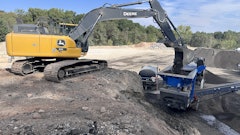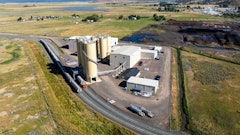
Two trends are impacting construction professionals:
1) Increasing supply chain disruptions because of extreme events. Yes, the pandemic impacted the supply chain, and still is. But many consultants believe the next set of supply chain impacts will come from climate change.
2) More environmental, social, governance (ESG) regulation. While most ESG regulation started in Europe, it’s branching out worldwide, including the United States. For example, the SEC has proposed mandatory disclosure of climate change risks. While this proposal is still in process, more stakeholders are asking about, and even demanding, ESG information.
A survey by GlobalData shows 61% of construction leaders face growing demand for sustainable construction methods. Considering that 80% of construction industry emissions come from the supply chain, now is the time to create and bolster an ESG strategy for your business.
The good news is the construction industry is faring well in ESG policies. According to an ESG survey by Avetta and the National Safety Council, 73% of companies in this industry have prioritized ESG. That’s a little lower than the manufacturing and finance/insurance industries but better than professional, scientific and technology services industries.
Here are the best practices for setting up an ESG plan that aligns with your goals and helps your supply chain understand its values.
Set Clear Supply Chain Sustainability Targets
By setting sustainability targets as part of an ESG plan, create a method to establish baseline performance, which helps identify areas of needed improvement. Finding the critical areas of improvement helps your company focus its efforts. Need some ideas? Many organizations provide standards for ESG performance, such as Science Based Targets Initiative (SBTi), Task Force on Climate-Related Financial Disclosures (TCFD), The Value Reporting Foundation (VRF/SASB), Global Reporting Initiative (GRI) and the UN Sustainable Development Goals (SDG). If you’re just embarking on the ESG journey, use the Materiality Map provided by VRF/SASB to find prioritized impact areas for your specific sector.
Use Formal Contracts, Procurement Requirements
Address ESG goals as parts of your contracts with vendors and suppliers. Adding codes, standards and guidelines can ensure your partners’ values match your organization’s ESG policies. Some policies to consider could be health and safety, conflict minerals, water scarcity, human rights or diversity.
Establish Adequate Governance Structures
Create or strengthen ESG oversight that reports to executive officers and the board keeps sustainability initiatives at the forefront of all departments and creates a companywide culture toward awareness and improvement. According to the Avetta/NSC survey, construction fares well with governance structures, with 77% of companies having a chief sustainability officer who reports to the CEO.
Incentivize Partners to Improve ESG Supply Chain
Many companies are tying ESG performance to remuneration models. Creating financial incentives promotes long-term sustainability over short-term profit maximization.
Assess, Manage and Monitor
ESG leaders can utilize several tools to collect quantitative and qualitative data, including surveys, certifications, inspections and self-assessment questionnaires. Technology helps automate reports so improvement (or lack thereof) can be monitored and tracked compared to the baseline. Alerts can warn leaders of areas creating the greatest risk and potential damage to reputation.
Engage with Employees, Suppliers, Partners, Stakeholders
ESG planning and reporting is more than enforcing rules and policies in a top-down approach. Managers should engage with employees, suppliers, partners and stakeholders to understand their various needs, ability to achieve targets and provide coaching on improvement. Two-way communication fosters more meaningful, long-term relationships with all involved.
Maintain a Focus on Health and Safety
Ensure that health and safety (EHS) is an integral part of ESG strategies. Naturally, EHS has a significant impact on risk management. Inadequate health and safety policies and practices can lead to reputational and financial liabilities.
Most organizations with established ESG plans make EHS a priority. In the construction industry, 95% of respondents in the Avetta/NSC survey said they were “very engaged”/“extremely engaged” in EHS as part of their ESG plans—more than 10 percentage points higher than the overall average.
Whether you have a robust ESG plan in place or are just starting one, following these best practices can improve sustainability efforts throughout your organization and with partners, suppliers and other stakeholders. Remember, you are building partnerships with these audiences to achieve goals rather than creating rules and restrictions.




















